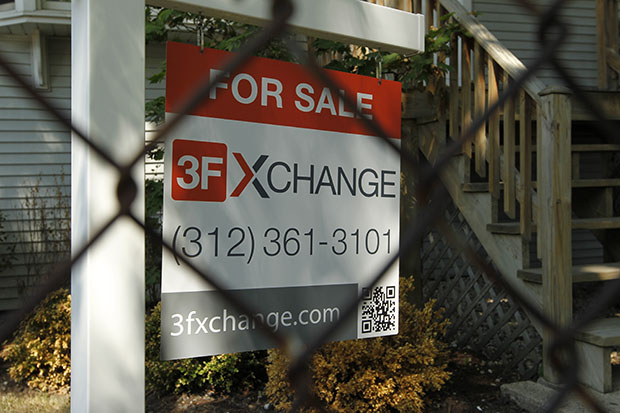Jorge Newbery has been working for six years to help keep struggling lower-income homeowners in their homes, and so far has done it for about 400 families nationwide. He’s always considered it a program with a social reward, so now he’s banking on a pillar of our social era: crowdfunding.
In October, Newbery launched Version 3.0 of his Chicago-based program, American Homeowner Preservation, this time lowering the cost of entry for investors who want to be a part of stabilizing families and their communities while also getting a financial return on their investment.
Investors had to pony up at least $250,000 in Version 2.0 (which I wrote about in early 2012), Newbery says. Now, the minimum investment is $10,000. Another key change is that instead of collecting annual dividends, investors will get returns monthly, which is more like what investors at the $10,000 level count on.
The goal is to raise $5.6 million by mid-November to buy a portfolio of 249 distressed mortgages that average about $60,000 each. You can tell from that last figure that American Homeowner Preservation (AHP) is working at the lower end of the housing market, where the distress is still intense.
While home values have been improving in middle-class and affluent areas, Newbery notes, “when you go to the neighborhoods where homes are in the [$60,000] range, those neighborhoods haven’t been coming up. There’s been this big rebound led by higher-value homes, but these other places, like parts of the South Side, have been left behind.” Thirty percent of Chicago-area homeowners are still underwater. “The foreclosure crisis isn’t over yet,” Newbery says. “It’s off the front page, but it isn’t over.”
AHP, which has 15 employees and is headquartered in the South Loop, buys portfolios of distressed loans from banks. It then works with the homeowners to reset the terms at a lower level that they can afford to pay and that generates a return for investors. One of its Chicago examples is a bungalow near 85th and Ashland in the Gresham neighborhood. According to Newbery, the owner owed $211,000 on a boom-era mortgage, but the property’s current market value was $45,000. Her retail business had been hit hard by the recession, so she had fallen far behind on on her $1,800-a-month mortgage payment.
AHP bought the loan from the lender for $20,000. (Lenders offload low-amount loans at a discount, Newbery says, because they often see recouping the whole debt as a costly undertaking.) AHP modified the homeowner’s loan to require just $450 a month from her. “That’s cheaper than rent,” Newbery notes, “and she and her family stay in their house, in their community.”
About five percent of the homes AHP has worked on are in Chicago, Newbery says. And while about 400 families have gotten help staying in their homes, AHP’s track record also includes some 250 vacant foreclosures that the venture has sold off. Because it buys portfolios from lenders, it can’t take only homes that still have owners in them, he explains. And because his operation’s focus is on lower-income homes, AHP is now sometimes getting partnered in on bigger investment vehicles’ buys of distressed properties. “They’re not interested in the ones on the bottom,” he says. “We take those.”
Interested investors should, of course, carefully check AHP’s offering, and must be accredited investors, meaning they have assets of $1 million or more or household income of at least $200,000 (single) or $300,000 (filing jointly).
For those who get involved, Newbery says, the investment offers good returns, both financial and social: “We have a social mission to keep families in their homes—that’s not window-dressing, that’s our reason for being here. But they don’t stay for free; they have to pay an amount that provides returns for our investors.”



